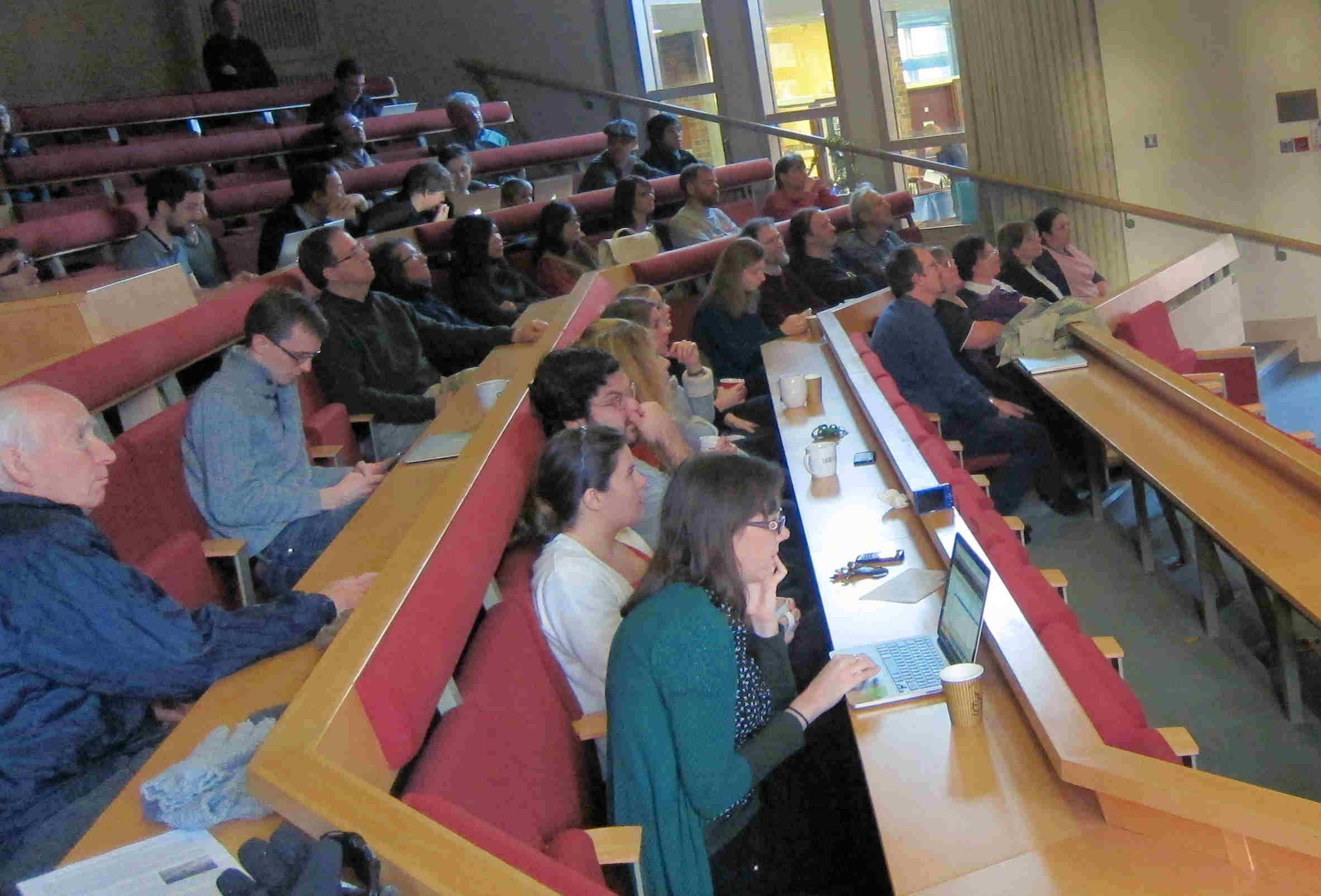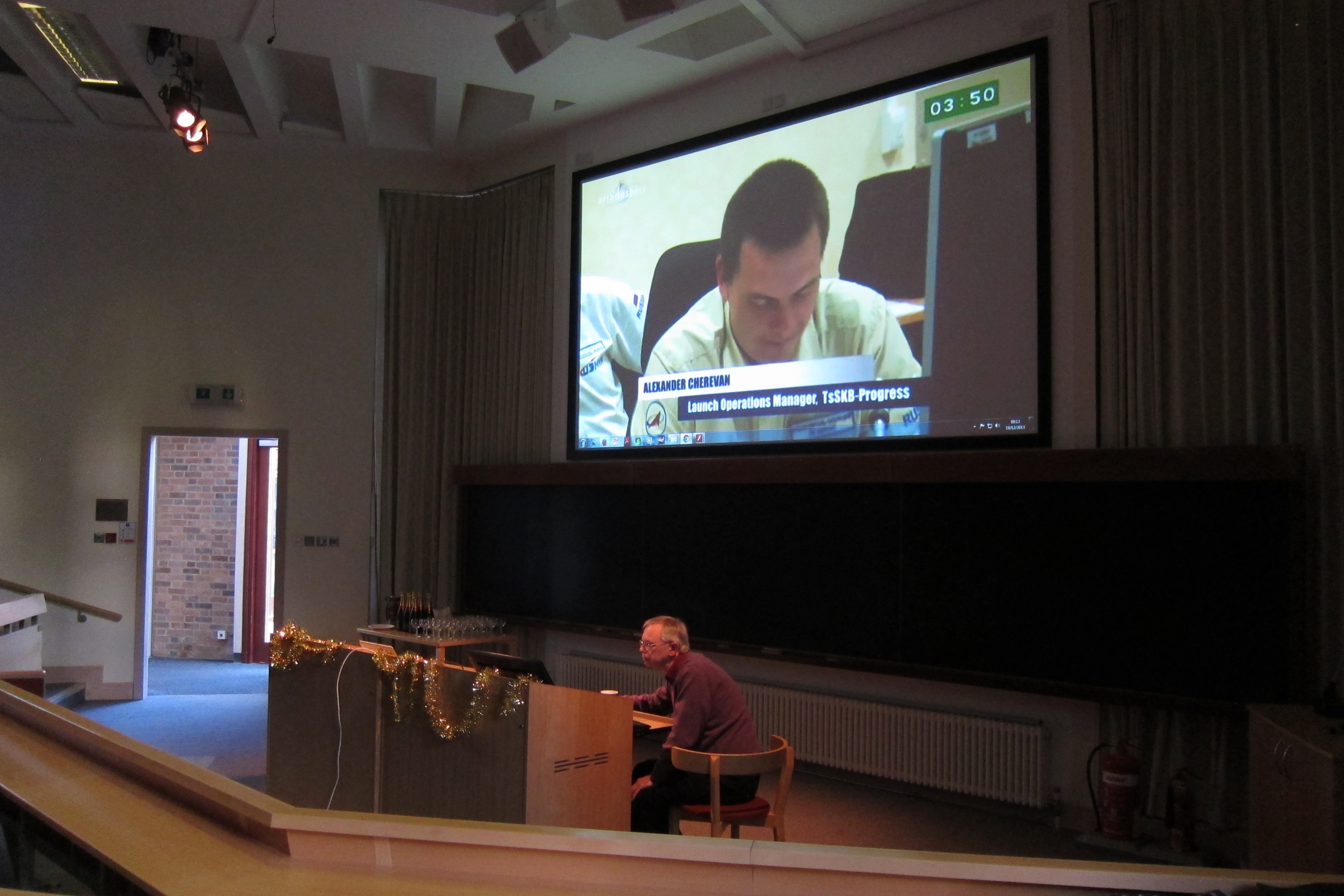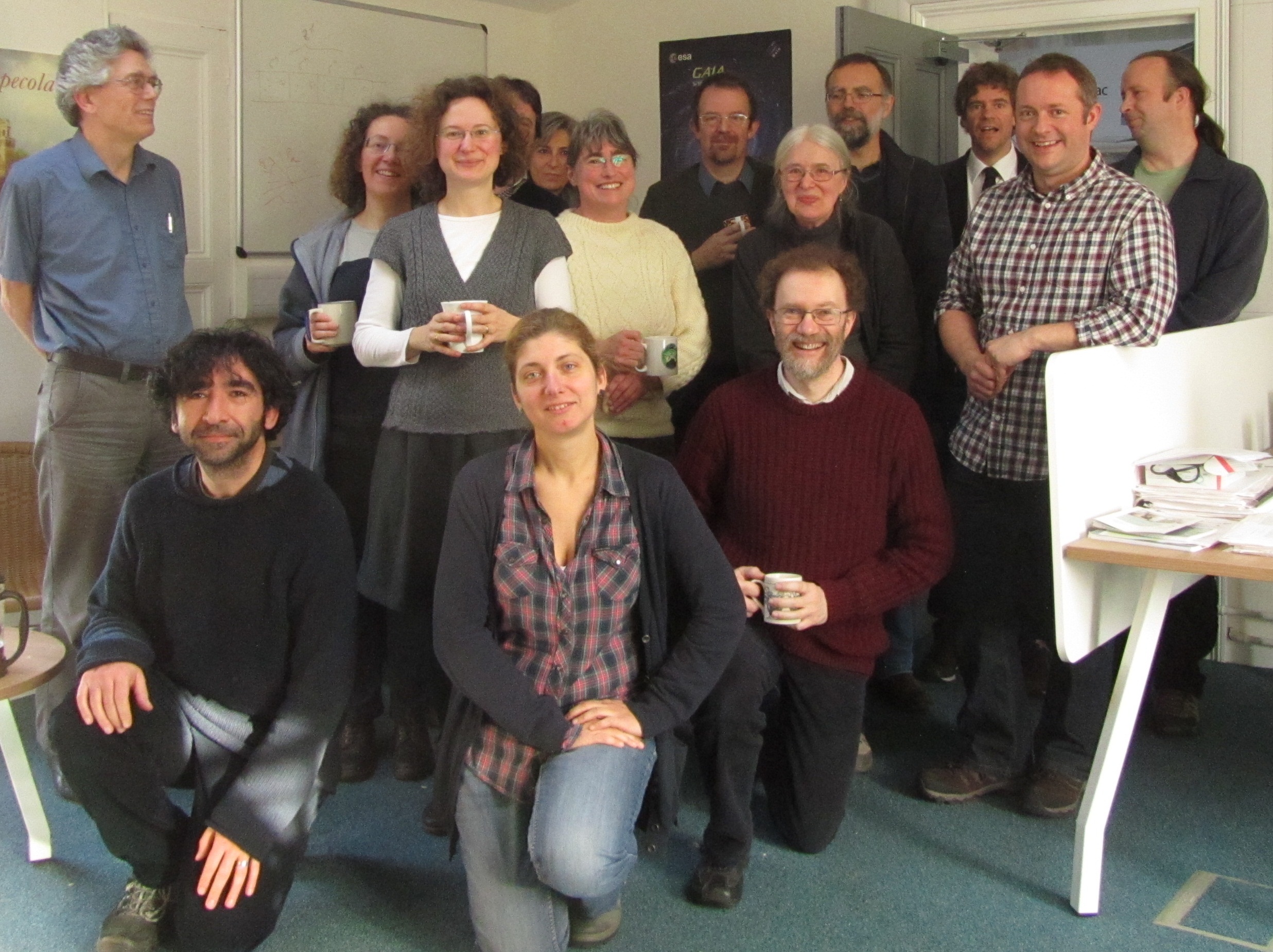news_20141219d - Gaia
"we keep on learning new things about this amazing machine" |
||
| By Giorgia Busso, Institute of Astronomy, University of Cambridge | ||
|
When I was asked to write something about my memories of the launch and the commissioning on the occasion of the one year anniversary of the Gaia launch, the first thing that came to my mind was "Blimey, has it been one year already?!?" When I think about it, it really seems as if it was yesterday, maybe also because it's the Christmas period again. I remember the day of the launch: I was at the Institute of Astronomy in Cambridge, where I work, and the big day had finally come, after the launch date had been changed a few times, postponed and brought forward. The plan was to watch the live stream of the launch together in the Sackler Lecture Theatre, which is the big auditorium here, so that we could see everything on a big screen, like at the movies. Because bigger is better! Despite the early hour, 8:30AM is basically the deep of the night for most astronomers, a lot of people attended. Of course the whole Gaia group was present: those that work on PhotPipe, the software to reduce and analyse the photometric and low-resolution spectroscopic data (I am part of this group), the Science Alert team, responsible for detecting anomalous variations in the flux, alert astronomers and the Gaia-ESO survey group for ground-based follow up observations. There were also a lot of people who were not involved with Gaia directly, but as this is a cornerstone mission, they were really interested in the launch. Even the IT guys and the institute support staff were there, as it was an important moment for all of us. And then there were a lot of kids, running around and very excited, because how often do you get to see a live launch of a rocket on a big screen? |
||
 |
 |
|
|
The Cambridge team gathered in the big auditorium |
The tension is mounting: watching the live stream | |
|
So this very mixed group was gathered in the big auditorium. There was some buzz, and in the background people were talking and commenting on who could recognise more people in the control room (I remember, Timo Prusti, Wil O'Mullane, Gerry Gilmore and Ralf Kohley). Dafydd Evans, a member of the Gaia Team, had worked all night before to write some software to read the housekeeping data and I remember him saying: "I have no idea what I am looking at, but these are coming from the satellite!" This was actually before launch. I was of course excited like everyone else, but with a hint of panic: What if something went wrong? And to put it on a personal level, a mission failure would have meant that I would not have had a job anymore. It would have meant starting all over with another project, or leaving astronomy, and all without ever having seen the results of a project I had been working on for more than six years. It would have been at least a huge disappointment. While I was still deep in thoughts, everyone fell silent. The show was kicking off and the countdown started. It was in French, but luckily I had studied French in high school! "Troix, Deux, Un, Top, Decollage!" and it went up... I think I didn't breathe for a minute, crossing fingers and waiting for the worst to happen. But then the rocket was small and smaller and disappeared in the morning sky. So far so good. But this wasn't the end yet. We had to wait for the satellite to wake up and start sending the first housekeeping data to ground, a signal that everything on board is okay. I honestly don't know how the Rosetta team managed to wait for ten years for Rosetta to wake up, waiting for one hour was already too much! In the meantime it was time to celebrate. Santa Claus had arrived slightly earlier and his present was a perfect launch! In Cambridge we celebrated with some bubbly wine and fresh pastry. It was a bit early for wine, but it didn't seem right to celebrate with a cappuccino. At some point an official statement came in: we had started to receive data from the satellite. Gaia was alive and kicking! Everything was nominal and looked promising. There was still the trip to L2 and the manoeuvre to put Gaia in position, but that would take some weeks. And even if I was still a bit nervous about this, I felt really optimistic. So I went home for Christmas and enjoyed the holidays. I didn't know what was yet to come: the nightmare after Christmas. It was the end of January (or the beginning of February, I honestly don't remember, those days were really a blur). It was Michael Davidson in Edinburgh who found out about an anomalous higher background, and since I am responsible for the software that analyses and subtracts the background in PhotPipe, I was directly involved in the issue. On the one hand I was really happy, I could finally look at the data, real data, not simulated ones, test my code on it and finally have some fun with it! I have been working on Gaia since 2007 and I think that was about the last time I handled real data, so you can imagine my craving for it. On the other hand I realised soon that my code wasn't good enough to keep into account the anomalous and variable background. This was a big problem as the background subtraction is one of the first steps in the data reduction, and without it the downstream processing couldn't run. So I basically put on hold my old code and started from scratch again! With a lot of help from the team here in Cambridge, especially Floor van Leeuwen who was always ready to suggest solutions, and Marco Riello, who implemented the code, I did it. Actually WE did it, we are a team, and in one way or another, even if only for some moral support at coffee, everyone contributed to this. |
||
 |
||
| Members of the Cambridge team (from left to right): Floor van Leeuwen, Abdullah Yoldas, Diana Harrison, Francesca De Angeli, Giorgia Busso, Marco Riello, Maria Arancha Delgado, Sue Cowell, Guy Rixon, Malgorzata van Leeuwen, Dafydd Evans, Frank Suess, Simon Hodgkin, Paul Osborne and Patrick Burgess | ||
| The software is now running, and it was used for the reduction of the EPSL data; there are still some hitches, still some parameters to fine tune. But as time passes, we keep on learning new things about this amazing machine and we understand better how it works. And we can keep improving our software to finally deliver the data that will change our knowledge of the Milky Way. | ||
|
Image credits Image 1 and Image 2: Nadia Blagorodnova Image 3: Greg Holland |
||
- Removed a total of (9) style text-align:center;
- Removed a total of (2) align=top;
- Removed a total of (1) border attribute.
- Removed a total of (1) cellpadding attribute.
- Removed a total of (1) cellspacing attribute.








































 Sign in
Sign in
 Science & Technology
Science & Technology